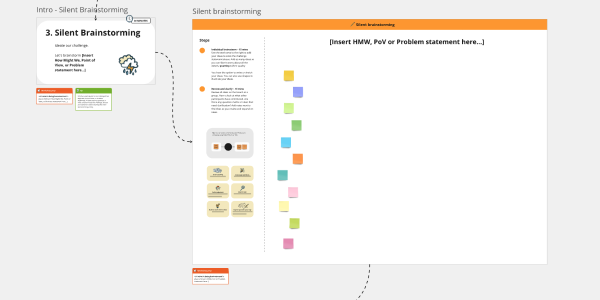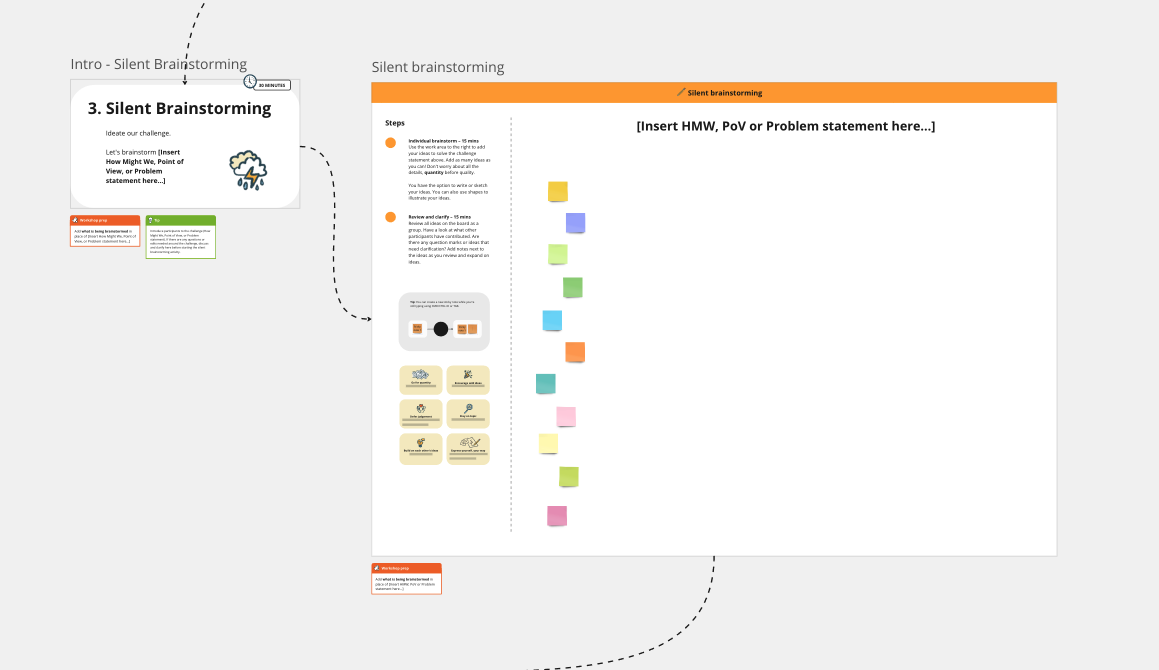Silent brainstorm
Brainstorming is one of many ideation methods and will help a group generate many ideas in a short timeframe. While brainstorming, you’re in divergent thinking mode, which will help you create new and innovative solutions. For this play, you can start with a problem statement, point of view or a how might we question.
In silent brainstorming, participants ideate individually before sharing and discussing their ideas. Silent brainstorming is a common way to run a brainstorm as it has many benefits:
- It provides multiple perspectives around a given problem
- Ensures you gather a lot of ideas before pursuing any specific ideas
- Participants' expertise and ideas are equally considered
- It produces significantly more ideas than brainstorming out loud, and the ideas tend to be more creative and of higher quality.
- It is helpful for introverts or people who are uncomfortable speaking up in a workshop.
- Because the ideas are written down (or drawn, if preferred) by the participants themselves during the silent brainstorm, we are certain that every idea will be documented along the way.
- There is flexibility around the output of the silent brainstorm – you can ask participants to either write or draw or give the option to do either. This will make the play useful for many different things, from a service to specific product feature.
Tip
The silent brainstorm play is a part of our Ideation game plan, which also include the following plays: “how might we...”, “grouping” and “dot voting”.

Outcomes
- A large number of ideas generated in a short timeframe
- Potential ideas that can be developed into testable prototypes or experiments
- Individual ideas that can inspire new ideas in other people
The stages

The four stages of the Service design and delivery process are Discovery, Alpha, Beta, and Live.
Digital service standard
This play helps your service meet the following criteria of the digital service standard.
Share your feedback
Take our short feedback survey and tell us what you thought of this play, or report an issue.
This playbook is a beta product, your feedback helps us improve it for everyone.
Contact us
If you need advice, mentoring, or guidance on how to use the playbook, or you’d like to contribute to the playbook, you can contact us.
